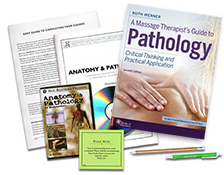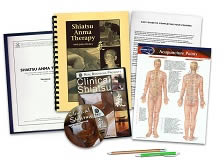

It seems hard to believe, but the word “stress” as it is used in today’s world, only came into existence in the 1930s, and moved into popular culture in the late 1950s.
Because it is a relatively modern word, it is used unchanged in many languages. In German it would be “der stress,” in French, “il stress” and so on. In Chinese calligraphy there is no one character or word to signify stress, instead they use two – an upper character for danger and a lower one representing opportunity, which more accurately translates into “crisis.”
The Father of Stress
Endocrinologist, Han Selye, MD, Ph.D, D.Sc. (1907-1982) is considered to be one of the early pioneers in stress research. It was Selye who coined the terms “stress” and “stressor,” defining stress as “the nonspecific response of the body to any demand, whether it is caused by, or results in, pleasant to unpleasant conditions.”
In 1936 he identified what is referred to as the General Adaptation Syndrome. These are the three stages of adaptation a person goes through as a reaction to a psychological or physical demand.
3 Stages of the General Adaptation Syndrome
1. Alarm
This is when the body recognizes a threat or some kind of challenge and the sympathetic nervous system kicks in, producing a “flight or fight” response. Adrenaline (epinephrine), noradrenaline (norepinephrine) and cortisol (hydrocortisone) are produced by the adrenal glands. The parasympathetic (“rest and digest”) system is deactivated. (Note: Newer research also includes a “freeze” response, common in Post Traumatic Stress Disorder.)
2. Resistance
The body attempts to adapt to, or cope with, a persistent challenging situation. Hopefully, during this stage the source of the stress will be resolved and the body begins to recover and restore balance. This stage requires physiological resources, which, if not quickly resolved, can eventually be depleted and lead to exhaustion.
3. Exhaustion
This stage does not always occur, but if it does then the stressor has lasted too long and will start to cause damage to the body, including a depressed immune system. There can be damage to nerve cells in both tissues and organs. Thought processes and memory may become impaired. The mind and body are unable to maintain normal function even after the stressor itself has subsided and symptoms may reappear (sweating, increased heart rate, dizziness, sleep dysfunction, etc.).
When Illnesses Manifest
If the stages of resistance and exhaustion last for an extended period of time both psychological and physical illnesses can manifest, including but not limited to diabetes, ulcers, digestive problems, immune system diseases, cardiovascular disease, anxiety and depression.
Good Stress versus Bad Stress
In 1975 Selye made a distinction between good and bad stress:
- The challenges or changes a person feels good about, he called “eustress.”
- Those a person feels bad about was referred to as “distress.”
Both of these, he observed, resulted in the activation of the General Adaptation Syndrome.
The basic difference between the two is in how an individual reacts and accepts the stressor. The same stressor can be perceived differently by various individuals – for one person a trip to a new place can be seen as an exciting adventure, for another it can be a fear of the unknown. It depends on the person’s expectations as well as his or her previous experiences.
Both eustress and distress, claimed Selye, will affect the body’s defense mechanisms.
Modern Research Into Stress
It wasn’t until the 1960s that academic psychologists began to incorporate Selye’s ideas into their practices – seeking to calculate and understand “life stress” by creating methods to score significant life events.
At that time researchers began to study and ultimately realize the correlation between stress and disease. Since then scientists and other researchers have focused on trying to understand how stress relates to all areas of physiology and human functioning in general.
Around the same time, and perhaps as an antidote to the newfound realization of the stresses of modern life, massage therapy was moving from the realm of the medical profession into the counterculture world, along with a resurgence of interest in Eastern philosophies, meditation and feminism.
Between the 1960s and 1970s health and healing practices from the East, including yoga, acupressure and Traditional Chinese Medicine were introduced into the American mainstream.
In the 1970s the Esalen Institute in California introduced Rolfing, the Feldenkrais Method, Trager and its trademarked Esalen massage method to the human potential movement and the profession of bodywork.
Over the past 60 years more techniques and methods have been added to the repertoire of massage therapists, in part to deal with the physical ills of individuals, but mostly to counter the effects of stress on the body and mind.
Short Term Effects of Stress
If a person feels threatened, the body will reorganize its priorities to maintain homeostasis. Resources are moved from one area to another in order to better cope with the stress.
These changes include:
- Reduction of digestion and elimination
- Lowering of immune function
- Release of neurotransmitters, producing heightened awareness
- Increase in heart rate and blood pressure
- Less energy going towards cell production and repair
- Hormonal shifts, such as an increased production of adrenaline and cortisol
Long Term Effects of Stress on the Body
If these changes are short term and end after the perceived threat has passed, the body will return to normal. If these changes persist well beyond the danger, the body will start to break down and react in ways that are counterproductive to good health, including:
- Abnormal sleep patterns (too much or too little sleep)
- Eating disorders (over or under eating to the point of obesity or anorexia)
- Headaches
- Cardiovascular problems (leading to heart attack, stroke, high blood pressure)
- Digestive problems (such as Crohn’s disease, irritable bowel syndrome, intestinal cramps, diarrhea, constipation)
- Muscular aches and pains
- Immune system disorders (rheumatoid arthritis, lupus, chronic fatigue, fibromyalgia, etc.)
- Hormonal disorders (hyper-, hypothyroid, diabetes, etc.)
- Skin problems (unidentified rashes, eczema, psoriasis, hives, etc.)
Stress Management
Over the past 30 to 40 years the area of stress management has become one of the medical profession’s greatest concerns. General practitioners, various specialties within the profession, psychologists and complementary care workers, including bodyworkers such as massage therapists, have devoted a lot of their time trying to reduce and relieve stress in their clients.
For the most part it may turn out that stress cannot be totally avoided, but there are ways to build energy reserves and reduce the effect stress has on life.
8 Helpful Ways to Manage Your Stress
1. Eat Nutritious Foods
Consuming fresh, whole foods provides your body with the necessary balance of vitamins, minerals, and nutrients to support overall health.
2. Stay Hydrated

Drinking enough water helps flush out toxins and metabolic waste, keeping your body clean and functioning optimally.
3. Practice Deep Breathing
Breathing is essential for life. Taking deep breaths allows your body to receive ample oxygen, helping reduce stress and anxiety.
4. Meditate

Setting aside time for quiet reflection brings peace to both the mind and body, promoting relaxation and mental clarity.
5. Be Kind
Show kindness to others and to yourself. Building nurturing relationships creates a strong support system, which is especially valuable during times of stress.
6. Seek Balance in Life

Make time for both work and play, and incorporate creativity into your routine. Overindulgence in any one activity can lead to burnout or physical illness.
7. Exercise Regularly
Moderate exercise boosts your energy levels, improves circulation, and strengthens your immune system.
8. Get Regular Massages

Massage therapy enhances the production of oxytocin and other hormones that promote relaxation. It also reduces stress hormones, improves circulation, and helps detoxify the body.
Prioritize Patience
Above all remember to be patient with yourself and others. The stress you feel is often relative to how you perceive the world around you.
To quote the Dalai Lama, “If you have fear of some pain or suffering, you should examine whether there is anything you can do about it. If you can, there is no need to worry about it; if you cannot do anything, then also there is no need to worry.”
More Information:
Stress: Massage Benefits and Precautions














